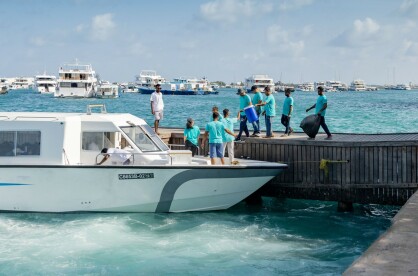One can surely agree without any further debate that sustainable energy is the only option for the future.
While it has been drilled into this generation, and the one before, since primary school about the sources of renewable energy, the technology has been taking a not-so-straight path in achieving this. Wind energy and solar energy have vastly different yields per area of installation, and tidal and wave energy bring an entirely new dynamic to the mix. What needs to be noted and celebrated is how various nations from around the world have figured out how to tap into energy sources that are most effective in their environments.
In countries with rivers and lakes, hydroelectric systems using dams are the way to go for the most sustainable source of energy. Projects such as the Wudongde Hydropower Station in China, and the Inga 3 in the Democratic Republic of Congo, rack up a bill of over 28 billion USD to build, but the carbon offset exceeds over 40 million tons per year in reduced emissions. The plants can generate 38.9 billion kilowatts, and 11,000 megawatts per year respectively, with the latter project planned to supply that power throughout the African continent.
Comparatively, such high levels of energy generation comes with changes in the landscape, yet with the proper planning and wildlife protection, as well as state-of-the-art construction, not only are these facilities expected to stand the test of time, their environmental impact can be limited as well.
China makes their stand on a secondary position with the world’s biggest offshore wind farm, the Ulanqab Wind Farm. Expected to generate over 18 billion kilowatts a year to the Beijing-Tianjin-Hebei power market and said to help power the 2022 Winter Olympic Games — this USD6 billion investment covering over 3,800 square kilometres of North China’s Inner Mongolia Autonomous Region would be powered by windmills capable of generating 4.16 megawatts, a substantial jump from the efficiencies of earlier turbine designs and technology.
To bring back a parallel of a lesser developed nation, Ghana takes a leap forward with their Ghana Wave Power Project, expected to be able to generate a 100 megawatts of renewable energy. Costing around USD7.5 billion, international company Seabased Energy have been contracted by TC Energy to build a wave energy plant off the coast of Ada, Ghana, which would be considered the biggest by global standards of this type.
The plant will use a series of buoys connected to linear generators as wave energy converters (WECs), and the power is generated by the motion of the buoys as they move with the waves. A switchgear makes the electricity suitable for grid use. According to Seabased, the 100 megawatt plant could supply electricity to tens of thousands of Ghanaian homes, sustainably and cleanly. In addition to not producing any emissions, the wave park creates an artificial reef for marine life, a very key advantage to nations dependant on nature for their livelihoods.
Drawing a parallel with the most recent plans for Thilafushi, the Shek Kwu Chau Energy From Waste in Hong Kong, a waste-to-energy (WTE) plant valued at USD4 billion, could generate enough energy to power over 100,000 households. The incinerators would also reduce landfills substantially, with the capacity to eliminate over 3,000 tonnes of waste per day.
Considering this ‘two birds with one stone’, the project will also include a mechanical treatment plant, an administration building, visitor centre, port handling facilities and desalination and wastewater treatment plants, while generating thousands of jobs through a construction process requiring land reclamation, infrastructure works, building and marine engineering.
These examples of wave generators and off-shore wind farms as well as WTE plants draw close parallels with the Maldivian situation. On a much smaller scale, such initiatives are more than viable for the nation, with the capacity to build the previously planned Gulhifalhu wind project, and also assimilate wave and tidal energy concepts into the national plan. The nation’s electricity demand can be met as the grid is already in place, but with the utilisation of the bridge infrastructure and the regions that have been dredged, including vast open water lagoons, sustainable energy can be utilised effectively in the Maldives.
Beyond these renewable resources, one source of energy that has not been receiving a fair review is that of nuclear. While inapplicable in the Maldives, nuclear energy technology has developed to the point where not only is the impact of the stations minimising environmental deformation, but also the levels of safety in handling the energy resource now surpasses historical levels.
Aspiring private companies have been tapping into this idea for years already, developing more and more concepts for smaller-sized, large capacity reactors, loosely reminiscent of the power supplies used in nuclear submarines. Disasters like Chernobyl has generated quite a lot of criticism, but when looked closely these situations were more due to human error, corruption, and negligence, than the science itself.
The most recent disaster in Fukushima, Japan, was also attributed to structural destruction caused by an earthquake, and has not deterred the Japanese people from tapping into this resource. Having more efficiency than a coal power plant with comparatively no waste generated in the same time frame, nuclear energy is also being posited as the energy source of the future by scientists and climate experts around the world.
Human impact, however, is the one part of the problem that cannot be removed. Whether building renewable resources of nuclear power projects, the human impact is what causes substantial changes to the environment, the biosphere, and the climate. As fellow inhabitants of this blue planet, humanity should find and strike a balance between nature and progress, and fossil fuels need to be removed from the equation if they are expected survive for the next 100 years.







